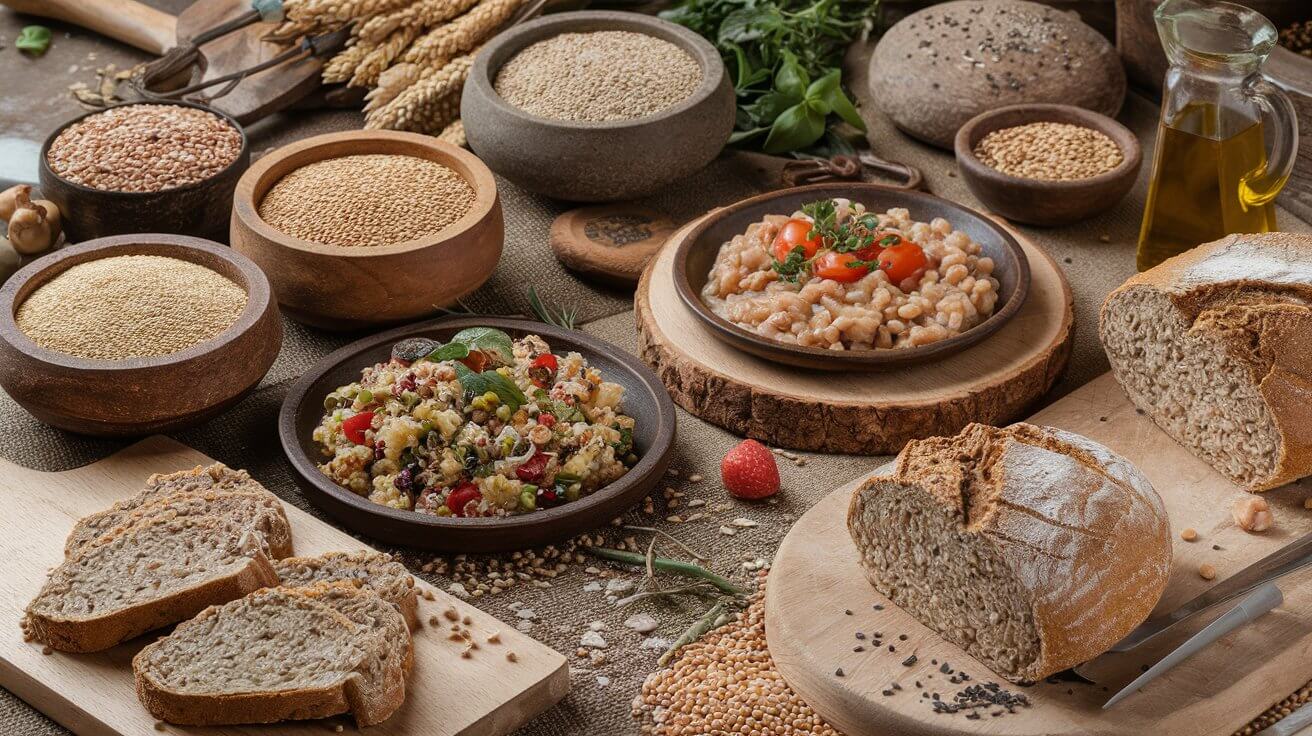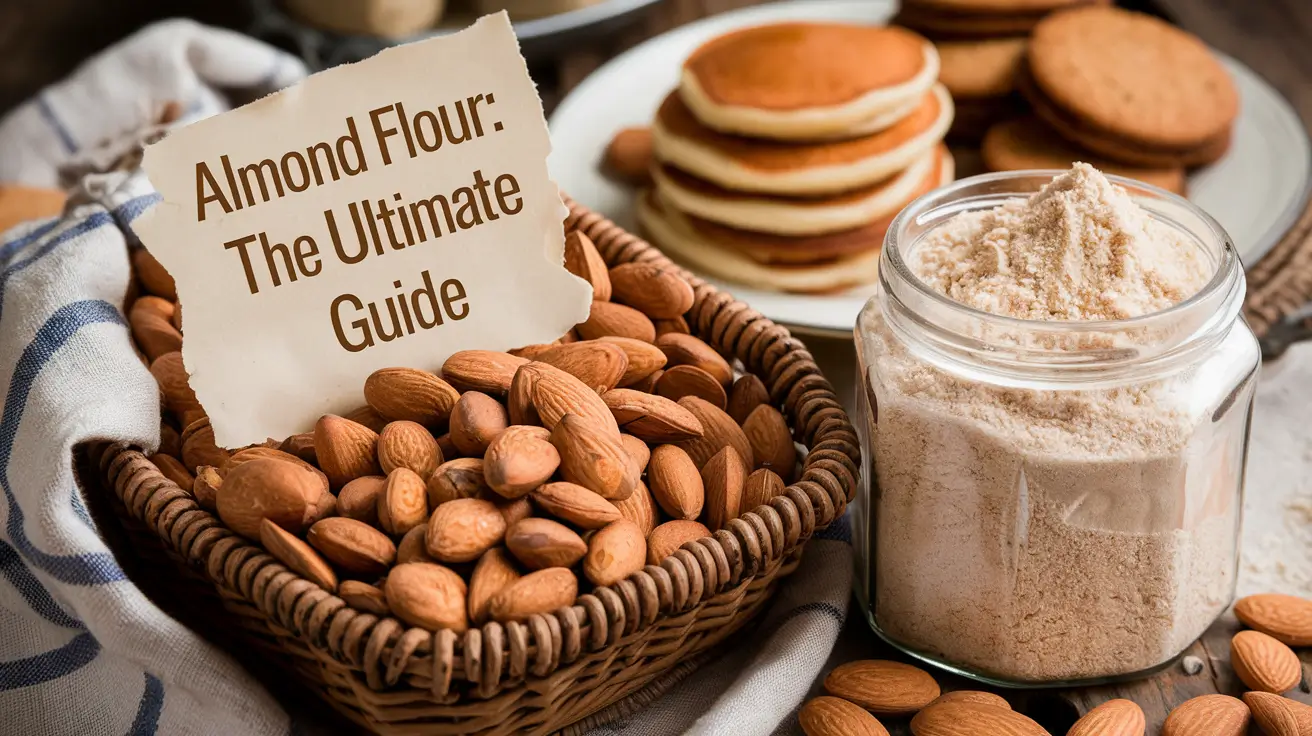Ancient Grain Recipes: Rediscovering Nutritious and Delicious Culinary Traditions

In recent years, there has been a resurgence of interest in ancient grains, with health-conscious consumers and culinary enthusiasts alike seeking out these nutritious and flavorful alternatives to modern wheat. Ancient grains, which include varieties like quinoa, amaranth, millet, and spelt, have been cultivated for thousands of years and offer a wealth of nutritional benefits and unique flavors. In this comprehensive guide, we’ll explore the world of ancient grains and provide you with a variety of delicious recipes to incorporate these nutritional powerhouses into your diet.
What Are Ancient Grains?
Ancient grains are cereal grains that have remained largely unchanged over the last several hundred years. Unlike modern wheat, which has been selectively bred for higher yields and easier processing, ancient grains retain their original genetic structure. This often results in higher nutrient content and different flavor profiles compared to their modern counterparts.
Some popular ancient grains include:
- Quinoa
- Amaranth
- Millet
- Spelt
- Farro
- Kamut
- Teff
- Sorghum
- Einkorn
- Buckwheat (technically a seed, but often used as a grain)
Health Benefits of Ancient Grains
Ancient grains are often praised for their nutritional value. Here are some of the health benefits associated with consuming ancient grains:
- High in fiber
- Rich in vitamins and minerals
- Good source of plant-based protein
- Contains antioxidants
- May help lower cholesterol
- Often gluten-free (though not all ancient grains are gluten-free)
- May help with blood sugar control
- Supports digestive health
Cooking with Ancient Grains: Tips and Techniques
Before diving into specific recipes, it’s important to understand some general tips for cooking with ancient grains:
- Rinse thoroughly: Many ancient grains benefit from a thorough rinse before cooking to remove any debris or bitter compounds.
- Soak when necessary: Some grains, like amaranth and millet, benefit from soaking before cooking to reduce cooking time and improve digestibility.
- Use the right ratio: Each grain has a specific water-to-grain ratio for cooking. Be sure to follow recipes or package instructions for best results.
- Toast for flavor: Toasting grains before cooking can enhance their nutty flavor.
- Be patient: Some ancient grains take longer to cook than modern grains. Allow enough time for proper cooking.
Now, let’s explore some delicious recipes featuring ancient grains!
Quinoa Recipes
Quinoa and Black Bean Salad
Ingredients:
- 1 cup quinoa, rinsed
- 2 cups water
- 1 can black beans, drained and rinsed
- 1 red bell pepper, diced
- 1/4 cup red onion, finely chopped
- 1/4 cup fresh cilantro, chopped
- 2 tablespoons olive oil
- 2 tablespoons lime juice
- Salt and pepper to taste
Instructions:
- Cook quinoa in water according to package instructions. Let cool.
- In a large bowl, combine cooled quinoa, black beans, bell pepper, onion, and cilantro.
- Whisk together olive oil and lime juice. Pour over the salad and toss to combine.
- Season with salt and pepper. Serve chilled or at room temperature.
Quinoa Breakfast Bowl
Ingredients:
- 1/2 cup cooked quinoa
- 1/2 cup milk (dairy or plant-based)
- 1 tablespoon honey
- 1/4 teaspoon cinnamon
- 1/4 cup mixed berries
- 1 tablespoon chopped nuts
Instructions:
- In a microwave-safe bowl, combine quinoa, milk, honey, and cinnamon.
- Microwave for 1-2 minutes, stirring halfway through.
- Top with berries and nuts. Serve warm.
Amaranth Recipes
Amaranth Porridge
Ingredients:
- 1/2 cup amaranth
- 1 1/2 cups water
- 1/4 teaspoon salt
- 1 tablespoon maple syrup
- 1/4 teaspoon vanilla extract
- Toppings of choice (fruit, nuts, seeds)
Instructions:
- Combine amaranth, water, and salt in a saucepan. Bring to a boil, then reduce heat and simmer for 20-25 minutes, stirring occasionally.
- Stir in maple syrup and vanilla extract.
- Serve hot with desired toppings.
Amaranth Crackers
Ingredients:
- 1 cup amaranth flour
- 1/4 cup sesame seeds
- 1/2 teaspoon salt
- 2 tablespoons olive oil
- 1/4 cup water
Instructions:
- Preheat oven to 350°F (175°C).
- Mix all ingredients in a bowl until a dough forms.
- Roll out dough thinly on a baking sheet lined with parchment paper.
- Score into cracker shapes and prick with a fork.
- Bake for 15-20 minutes until crisp and golden.
Millet Recipes
Millet Pilaf
Ingredients:
- 1 cup millet
- 2 1/2 cups vegetable broth
- 1 tablespoon olive oil
- 1 onion, diced
- 2 cloves garlic, minced
- 1 carrot, diced
- 1/2 cup frozen peas
- 1/4 cup chopped fresh parsley
- Salt and pepper to taste
Instructions:
- Toast millet in a dry pan until fragrant. Set aside.
- In the same pan, heat olive oil and sauté onion, garlic, and carrot until softened.
- Add toasted millet and vegetable broth. Bring to a boil, then reduce heat and simmer for 20 minutes.
- Stir in peas and cook for an additional 5 minutes.
- Remove from heat, stir in parsley, and season with salt and pepper.
Millet Breakfast Porridge
Ingredients:
- 1/2 cup millet
- 1 1/2 cups water
- 1/2 cup milk (dairy or plant-based)
- 1 tablespoon honey
- 1/4 teaspoon cinnamon
- Sliced banana and chopped nuts for topping
Instructions:
- Rinse millet and combine with water in a saucepan. Bring to a boil, then reduce heat and simmer for 15 minutes.
- Add milk, honey, and cinnamon. Cook for an additional 5 minutes, stirring frequently.
- Serve hot, topped with sliced banana and chopped nuts.
Spelt Recipes
Spelt Bread
Ingredients:
- 3 cups spelt flour
- 1 1/4 cups warm water
- 2 1/4 teaspoons active dry yeast
- 1 tablespoon honey
- 1 tablespoon olive oil
- 1 teaspoon salt
Instructions:
- In a large bowl, combine warm water, yeast, and honey. Let sit for 5 minutes until foamy.
- Add olive oil, salt, and 2 cups of spelt flour. Mix well.
- Gradually add remaining flour until a dough forms.
- Knead for 10 minutes, then place in a greased bowl and let rise for 1 hour.
- Punch down dough, shape into a loaf, and place in a greased bread pan.
- Let rise for another 30 minutes, then bake at 375°F (190°C) for 30-35 minutes.
Spelt Pancakes
Ingredients:
- 1 cup spelt flour
- 1 tablespoon baking powder
- 1/4 teaspoon salt
- 1 egg
- 1 cup milk (dairy or plant-based)
- 2 tablespoons melted butter or oil
- 1 tablespoon honey
Instructions:
- In a bowl, whisk together spelt flour, baking powder, and salt.
- In another bowl, beat egg, milk, melted butter, and honey.
- Combine wet and dry ingredients, stirring until just mixed.
- Cook pancakes on a preheated griddle until golden brown on both sides.
Farro Recipes
Farro Salad with Roasted Vegetables
Ingredients:
- 1 cup farro
- 3 cups water
- 2 cups mixed vegetables (e.g., zucchini, bell peppers, eggplant), chopped
- 2 tablespoons olive oil
- 1/4 cup crumbled feta cheese
- 2 tablespoons balsamic vinegar
- Salt and pepper to taste
Instructions:
- Cook farro in water according to package instructions. Drain and cool.
- Toss vegetables with 1 tablespoon olive oil, salt, and pepper. Roast at 400°F (200°C) for 20-25 minutes.
- Combine cooled farro, roasted vegetables, and feta cheese in a bowl.
- Whisk together remaining olive oil and balsamic vinegar. Pour over salad and toss to combine.
Farro Risotto
Ingredients:
- 1 cup farro
- 4 cups vegetable broth, kept warm
- 1 tablespoon olive oil
- 1 onion, finely chopped
- 2 cloves garlic, minced
- 1/2 cup white wine
- 1/2 cup grated Parmesan cheese
- 2 tablespoons butter
- Salt and pepper to taste
Instructions:
- Heat olive oil in a large pan. Sauté onion and garlic until softened.
- Add farro and toast for 1-2 minutes.
- Add white wine and cook until absorbed.
- Gradually add warm broth, 1/2 cup at a time, stirring constantly and waiting for each addition to be absorbed before adding more.
- Once farro is tender (about 30-35 minutes), stir in Parmesan and butter.
- Season with salt and pepper and serve hot.
Conclusion
Incorporating ancient grains into your diet is an excellent way to boost nutrition and add variety to your meals. These recipes offer a starting point for exploring the diverse world of ancient grains, but don’t be afraid to experiment and create your own unique dishes. As you become more familiar with cooking these nutritious grains, you’ll discover new flavors and textures that can enhance your culinary repertoire.
Remember, when purchasing ancient grains, look for whole grain versions to maximize nutritional benefits. Many of these grains can be found in health food stores, specialty markets, or online retailers. With their growing popularity, you may even find them in your local supermarket.
By incorporating ancient grains into your diet, you’re not only nourishing your body with wholesome ingredients but also connecting with culinary traditions that have sustained civilizations for thousands of years. So go ahead, embrace the ancient wisdom of these nutritious grains, and enjoy the delicious journey of discovery!




